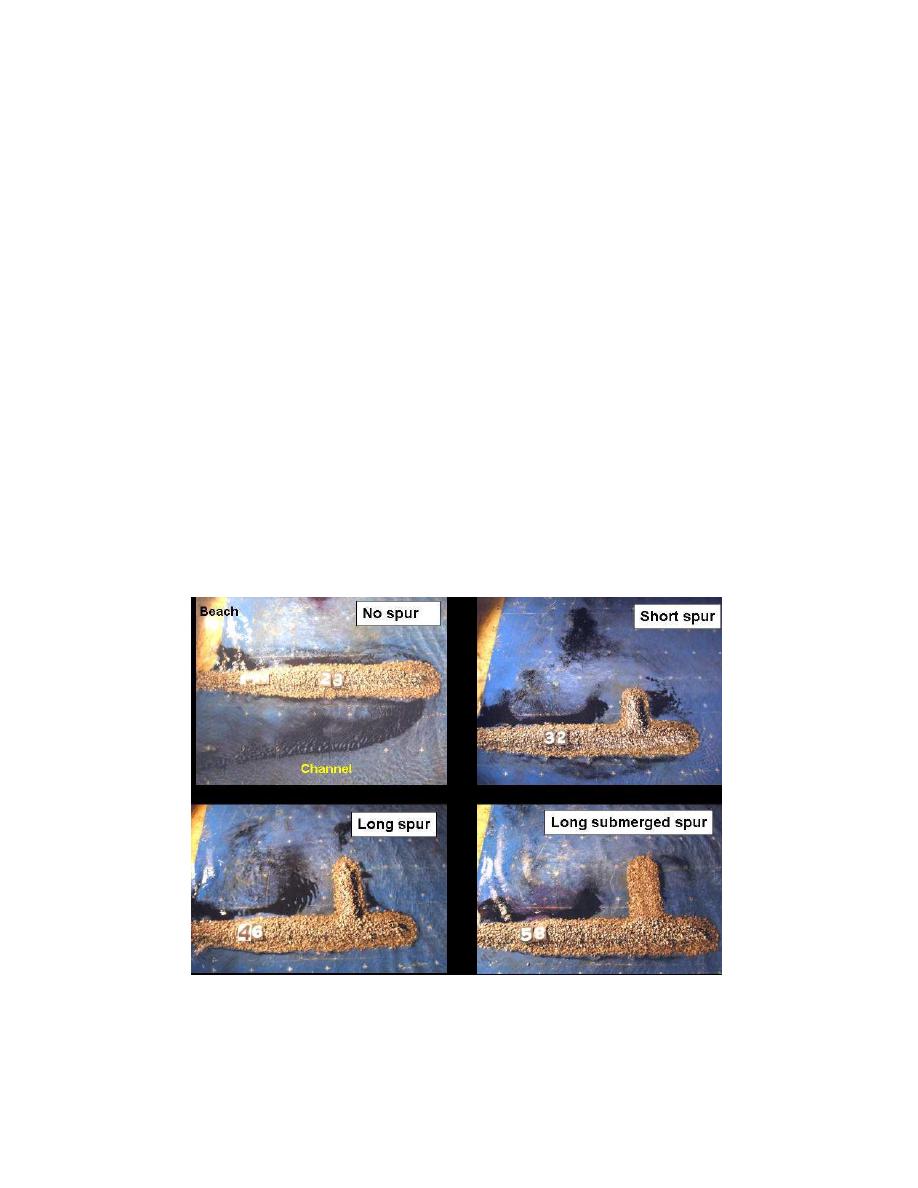
January 13, 2004
14:36
WSPC/101-CEJ
00094
559
Progress in Management of Sediment Bypassing at Coastal Inlets
A short spur was then constructed (46 m in length, if a 1:50 model to prototype
scale is applied). A long spur of 76 m was also constructed and a submerged version
of this long spur was made by reducing the crest elevation to mean low water while
experiments were conducted at a +1.5 m elevation (again assuming a 1:50 model
scale).
Figure 16 compares current patterns for these configurations. Red and green
dye trace the current pattern created by breaking waves and a flood tide maximum
current. The deflection of the current by the spurs is noted. The submerged spur
also deflects the longshore current (bottom right, Fig. 16). Waves break on the
submerged spur, effectively deflecting the longshore current and functioning similar
to the emergent spur. A submerged spur is much less costly to construct than an
emergent one and may have greater aesthetic appeal.
Figure 17 shows results of sediment tracer experiments for the same wave and
tidal current conditions. The no-spur arrangement permits the tracer to enter the
channel region. The short spur reduces this transport somewhat, but the longer
spurs, including the submerged spur, achieve better results, holding sediment in the
region of the shoreward side of the spur.
Figure 18 shows velocity fields in the region near the jetty for the four pre-
viously discussed model arrangements. An energetic wave (11 second period, 3 m
height) plus a maximum flood current situation in the channel exist for these plots.
Fig. 17. Sediment tracer movement due to 3 m, 15 seconds waves, with maximum flood current of
1.4 m/sec in channel.
Figure 17. Sediment tracer movement due to 3-m, 15-sec waves, with maximum flood
current of 1.4 m/sec in channel.




 Previous Page
Previous Page
